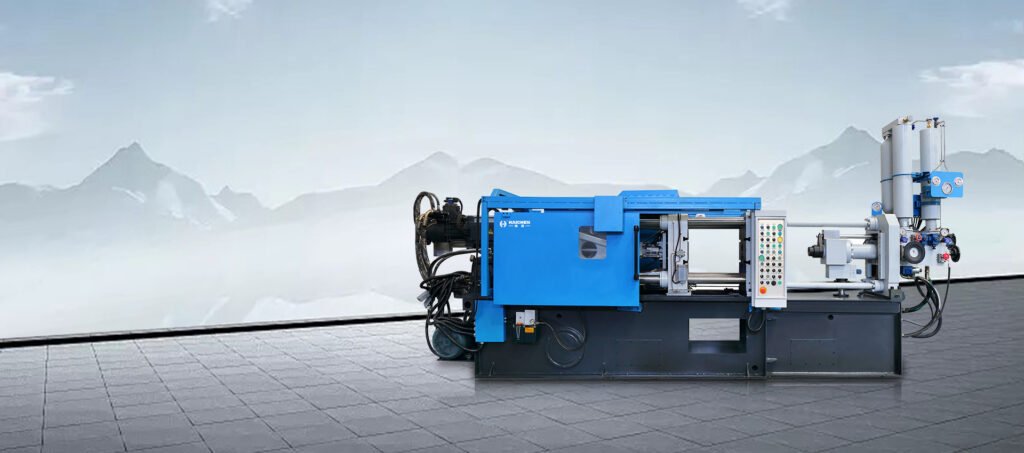High Pressure Die Casting components (HPDC) is a process capable of manufacturing complex metal parts in high volumes.
A complete cold chamber die casting system.
Its main components include:
- Die casting mould
- Die Casting Machine
- Die casting furnace (Melting Furnace)
- Die-casting alloy materials (Metal Materials)
- High Pressure Injection System (High Pressure System)
- Cooling System
- Die casting exhaust system (Evacuation System)
- Die casting after processing equipment (Post-Processing Equipment)
Die casting mould
The mould used in the high pressure die casting process is a key component.
The die is usually made of high-strength steel and is capable of withstanding high pressures and temperatures.
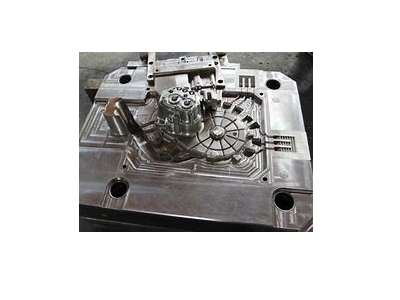
The design of the die determines the shape and accuracy of the final product and therefore needs to be very precise and durable.
Die Casting Machine
The die casting machine is the core equipment that performs the high-pressure die casting process.
It consists of an injection port that hydraulically and mechanically injects molten metal into the mould cavity.
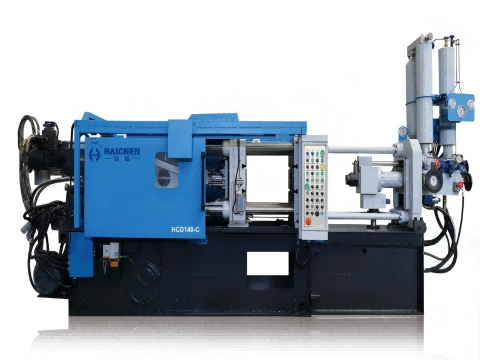
The moving parts of the die casting machine (e.g. moving and fixed dies) are used to form the mould cavity and open it after the metal has solidified.
Die casting furnace (Melting Furnace)
Melting furnaces is able to heat and melt metallic materials such as aluminium, zinc or magnesium.
These metals usually have a low melting point and are suitable for high pressure die casting processes.
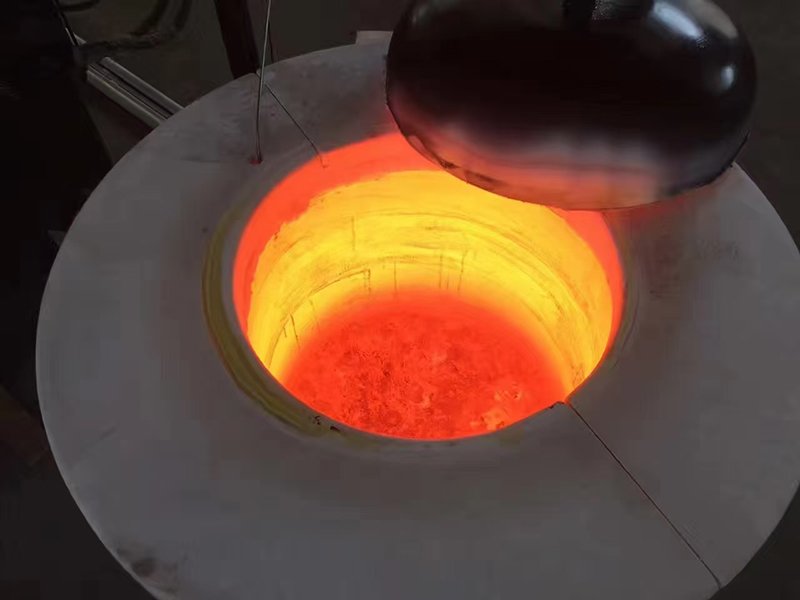
Die-casting alloy materials (Metal Materials)
Commonly used metal materials include aluminium, zinc and magnesium.
These materials are widely using in high-pressure die-casting process because of its low melting point and good fluidity.
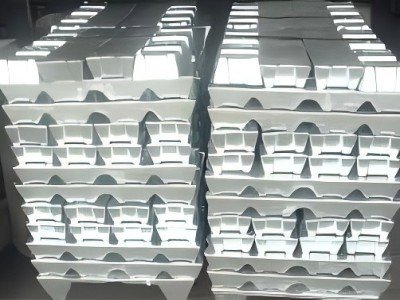
High Pressure Injection System (High Pressure System)
This system is responsible for injecting molten metal into the mould under high pressure.
Typical pressures range from 100 to 25,000 PSI (approximately 7 to 1720 MPa).
This ensures that the metal fills the mould cavity quickly and forms a uniform part.
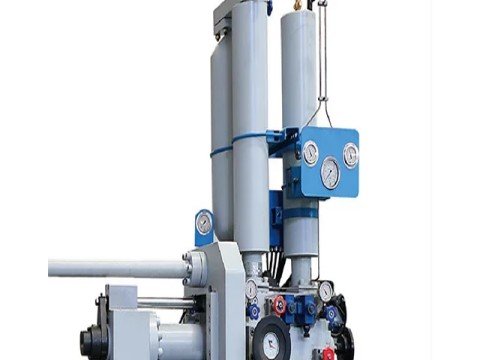
Cooling System
Due to the extremely rapid filling of the metal during high pressure die casting, the cooling system is critical to controlling the rate of solidification of the metal.
This helps to improve the dimensional accuracy and surface quality of the part.
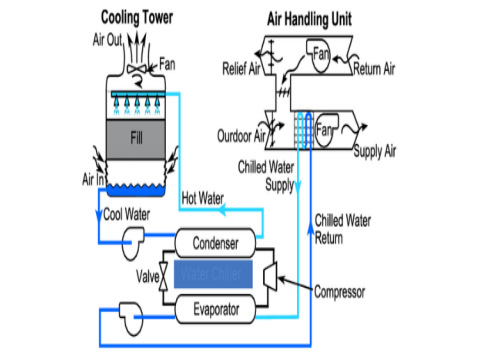
Die casting exhaust system (Evacuation System)
In order to reduce porosity and other defects, high-pressure die casting process often use the exhaust system to remove the air in the mould.
This helps to improve the overall quality and reliability of parts.
Die casting after processing equipment (Post-Processing Equipment)
Although high-pressure die casting can produce high-quality parts, but sometimes still need to carry out subsequent processing.
Such as cutting, grinding or heat treatment to meet specific application requirements.
These components work together to make high pressure die casting an efficient and accurate manufacturing process.
High-pressure die casting is suitable for the production of complex metal parts in automotive, aerospace, electronics and consumer products.
What materials are used in high pressure die casting?
In the high-pressure die-casting process, we will use six kinds of common alloy materials:
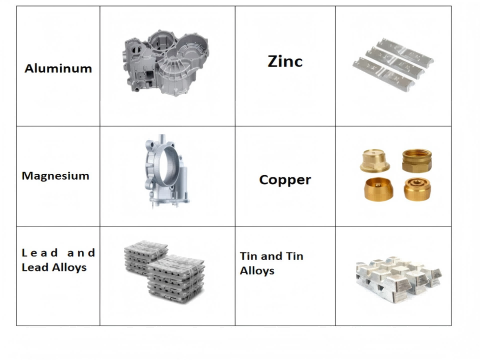
- Aluminium alloy
- Magnesium alloy
- Zinc die casting alloys
- Copper alloys
- Lead-tin alloys
- Iron-based metal glass (BMG)
Aluminium alloy
This is one of the most common materials because of its light weight, good dimensional stability, electrical conductivity, corrosion resistance and thermal resistance.
Aluminium alloys have good fluidity after melting and are suitable for die casting under high pressure conditions to produce high quality castings.

Magnesium alloy
Magnesium alloys are also one of the common materials in high-pressure die casting, especially in applications requiring high strength and lightweight construction.
The rapid cooling characteristics of magnesium alloys contribute to the formation of a fine grain structure, which improves their ductility and mechanical properties.
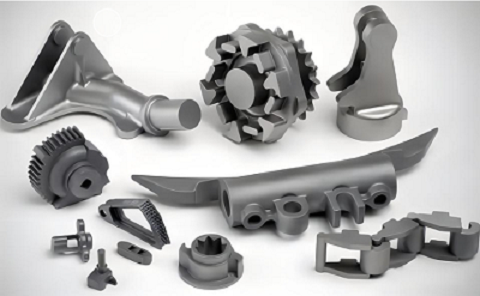
Zinc die casting alloys
Zinc alloys are commonly using in the manufacture of low-melting-point metal parts, and their use in high-pressure die casting is also widespread.
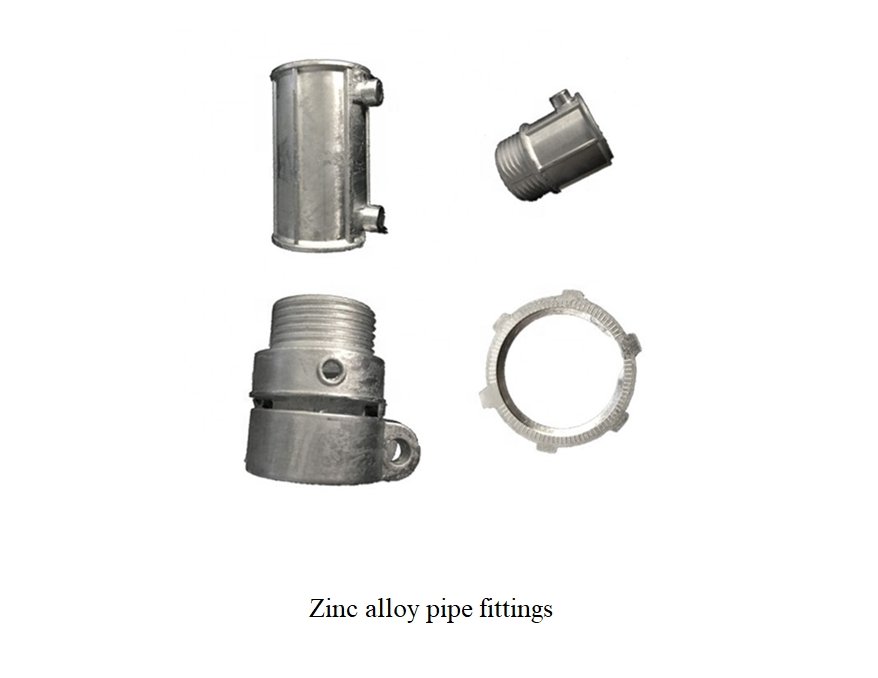
Copper alloys
Copper alloys are for some specific applications, especially where require excellent electrical conductivity and corrosion resistance.
Lead-tin alloys
Although not as common as the above materials, lead-tin alloys are also used in some specific applications.
Iron-based metal glass (BMG)
In recent years, iron-based metal glass has also been introduced into high-pressure die casting to improve the mechanical properties and durability of products.
These materials are injected into the mould cavity through the high-pressure die-casting process and solidify rapidly under high pressure and temperature.
This results in the formation of metal parts with complex shapes and high precision.
This process is particularly suitable for the production of high-volume metal parts make it important in Die Casting components.
It is a strong performer within the automotive, aerospace, electronics and consumer goods industries.
What are the advantages of high pressure casting?
High Pressure Die Casting (HPDC) has several significant advantages that make it the process of choice for manufacturing complex metal parts.
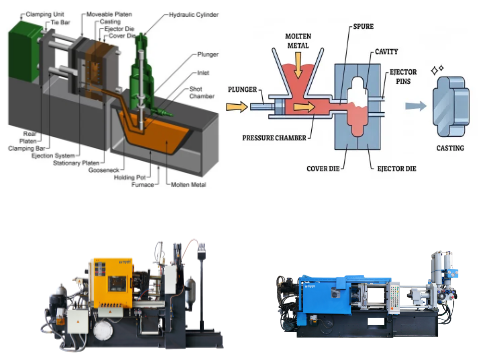
The following are its main advantages:
- The ability to manufacture complex geometries
- High precision and dimensional stability
- High production efficiency
- Excellent surface quality
- High material utilisation
- Excellent mechanical properties
- Cost-effectiveness
The ability to manufacture complex geometries
High Pressure Die Casting is particularly well suited for producing parts with complex geometries and details.
Thin walls, fine structures and complex internal features can be easily manufactured by this process.
High precision and dimensional stability
High pressure casting is capable of producing products with extremely high dimensional accuracy and consistency.
This is because during high pressure casting, the metal liquid rapidly fills the mould cavity under high pressure.

And cured in a short time, thus ensuring the dimensional accuracy and consistency of the parts.
High production efficiency
High pressure casting is a highly efficient production method that enables fast production cycles and high throughput.
This makes it ideal for mass production, especially in industries that require mass production of lightweight, high-performance parts.
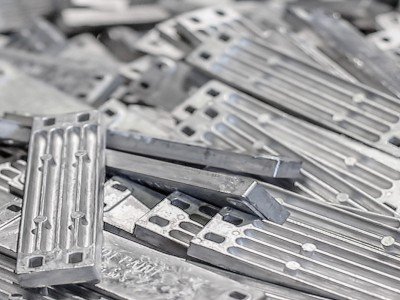
Excellent surface quality
Due to the high pressure casting process the metal liquid fills the mould quickly and solidifies rapidly.
Defects such as porosity and shrinkage can be avoided, resulting in the production of parts with smooth, defect-free surfaces.
This reduces the need for subsequent processing such as grinding and polishing.
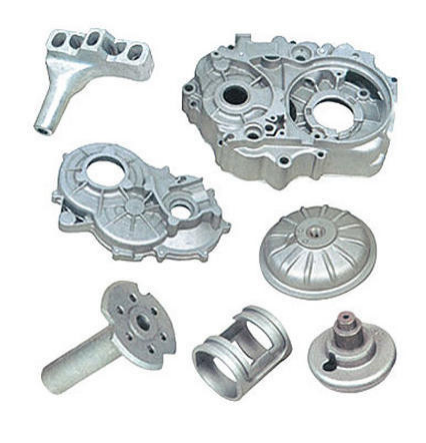
High material utilisation
High pressure casting process due to its high filling rate and high pressure conditions.
The metal liquid is able to completely fill the mould cavity, reducing material wastage.
In addition, material utilisation is optimised due to the high dimensional accuracy of the parts.
Excellent mechanical properties
Parts produced by high pressure casting typically have excellent mechanical properties due to their fine microstructure which contributes to the strength and toughness of the material.
This is particularly important for applications that require high loads showing as Die Casting components.
Cost-effectiveness
Although the initial investment in high pressure casting equipment is high, its efficient production capacity and low unit cost make it very cost effective in mass production.
In addition, overall production costs are lower due to the reduction of secondary processes and material wastage.
High pressure casting offered by Haichen occupies an important place in modern manufacturing due to its high precision, complex shape making capability, excellent surface quality, high productivity, high material utilisation, cost effectiveness and excellent mechanical properties.
